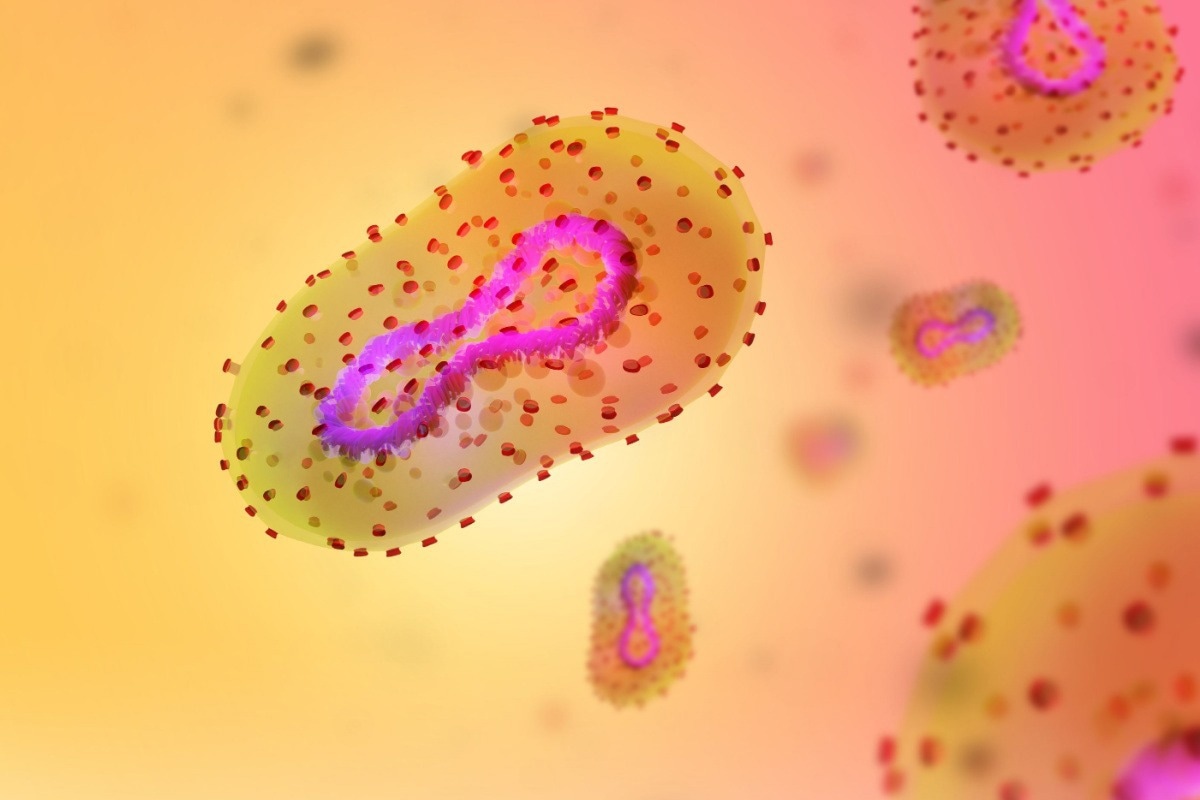The first monkeypox virus (MPXV) human infection from the current outbreak was reported in the United Kingdom in May 2022. Since then, there has been a continual rise in the number of MPXV infection cases worldwide.
The current MPXV outbreak has been primarily concentrated in men who had sexual activity with other men (MSM). To date, over 53,000 MPXV cases have been reported from the current outbreak, all of which have been attributed to the MPXV Clade II.

Study: Monkeypox DNA levels correlate with virus infectivity in clinical samples, Israel, 2022. Image Credit: FOTOGRIN / Shutterstock.com
Background
MPXV is a double-stranded deoxyribonucleic acid (DNA) zoonotic virus that belongs to the family Poxviridae of the genus Orthopoxvirus. MPXV human infection was reported in central Africa for the first time in 1970.
Subsequently, several sporadic outbreaks were reported in Central and West Africa. In 2003, MPXV outbreaks outside Africa were recorded for the first time and were due to the import of exotic animals from Africa.
During the current outbreak, individuals have reported skin/mucosal lesions of the genital, perianal, and/or oropharyngeal regions. Polymerase chain reaction (PCR) analysis has been used to detect MPXV infection.
Since the presence of viral DNA in a clinical specimen does not imply infectivity, scientists have tested the clinical samples of MPXV patients to determine the relationship between the MPXV DNA copies and infectious status in a recent Euro Surveillance study. The number of MPXV DNA copies was measured through PCR (quantitation cycle (Cq) value), whereas infectious status was measured in plaque formation unit (pfu)/mL using a plaque assay. The threshold PCR value that indicated MPXV infection was determined in this study.
About the study
A total of forty-three clinical samples, which included 21 oropharyngeal swabs, 20 dermal-lesion exudate swabs, and two rectal swabs, were obtained from thirty-two patients from six medical facilities in Israel. The clinical swab samples were stored for up to 48 hours in tubes containing viral transport medium (VTM) at 4°C. These samples were subjected to viral DNA quantification, with infectious viral titers subsequently measured.
The Cq values for oropharynx swabs were relatively high, with the majority of these samples exhibiting infectious MPXV titers below the detection level. The Pearson correlation test determined the relationship between viral DNA levels in each sample and infectious viral titers. A linear regression equation was used to predict the Cq value associated with the non-infectious virus.
Study findings
A strong and negative correlation between PCR results related to MPXV oropharyngeal, rectal swabs, dermal lesions, and virus infectivity on cultured cells indicated higher infectivity in specimens with low Cq values.
In the evaluation of paired oropharynx and dermal lesion samples of the same patients, most dermal lesion samples were associated with a higher viral load and low Cq values as compared to oropharynx lesion specimens. This suggests that dermal lesions present a higher infectivity risk.
A Cq value greater than or equal to 35 indicated negative or minor MPXV infection. This finding is consistent with a previous study that reported a Cq value of 29 in semen samples that indicated the person had successfully recovered from MPXV.
Although the present study estimated a ratio of 172 DNA copies/pfu, a previous study contradicted this finding and reported a ratio of 10-100 DNA copies/pfu. This contradictory finding was attributed to the fact that the current study estimated the presence of viral DNA rather than infectious particles. Additionally, as compared to viruses originating from culture, the viruses isolated from clinical samples had decreased infectivity towards cell lines.
Storing the samples for up to 48 hours prior to analysis might influence the result. Nevertheless, based on the researchers’ unpublished research conducted in the same laboratory, poxvirus infectivity is typically maintained until 24 hours of incubation at 4°C and shows marginal change after 48 hours of incubation in similar conditions.
Limitations
The current study has several limitations, including the need for further analysis of additional lesion swabs with high Cq values. Further research is also needed to analyze the virus infectivity of other poorly available clinical samples, such as scabs, rectal swabs, and semen.
The authors were unable to consider the time between specimen collection and the estimated date of infection. Variations in the methods used to collect samples might have impacted the recovery of DNA.
Conclusions
Taken together, the study findings indicate a strong correlation between MPXV Cq values and virus infectivity. It further suggested that a Cq value greater than or equal to 35 corresponded to minor or non-infectivity.
The researchers of the current study recommend that infectiousness must be evaluated based on overall clinical manifestation, such as lesion location and stage. These findings may be used to develop guidelines and protective measures for MPXV-infected patients and close contacts.
Journal reference:
- Paran, N., Yahalom-Ronen, Y., Shifman, O., et al. (2022) Monkeypox DNA levels correlate with virus infectivity in clinical samples, Israel, 2022. Euro Surveillance 27(35). doi:10.2807/1560-7917.ES.2022.27.35.2200636